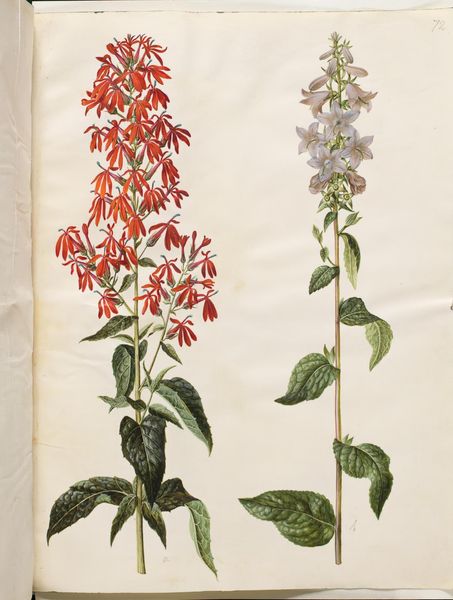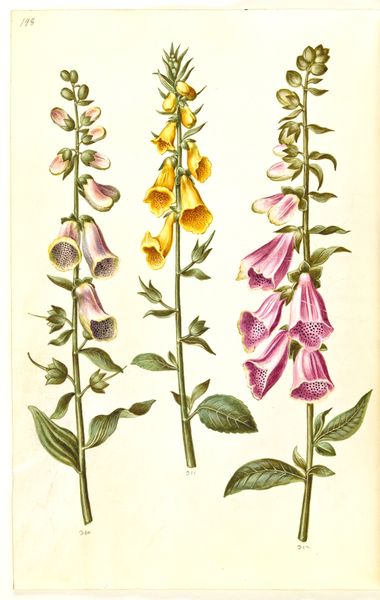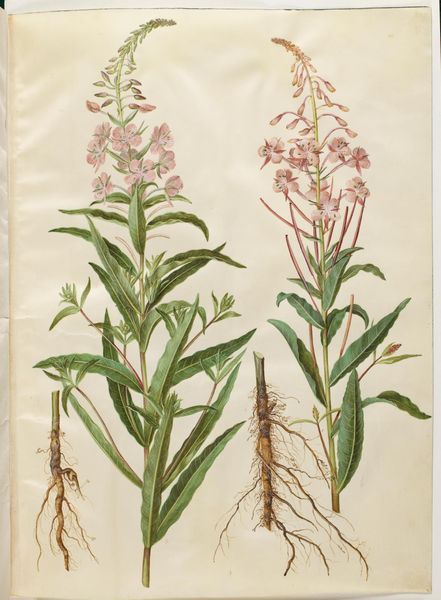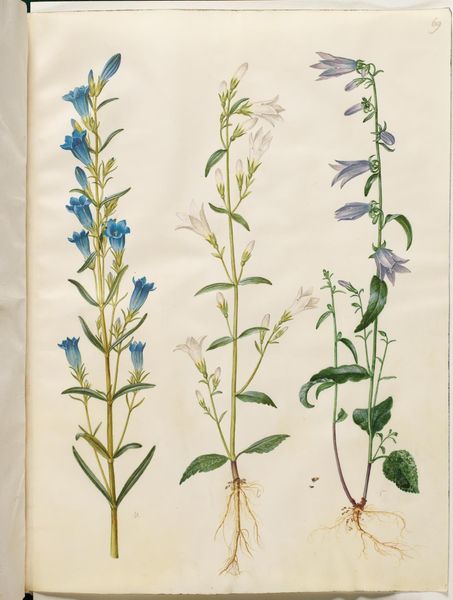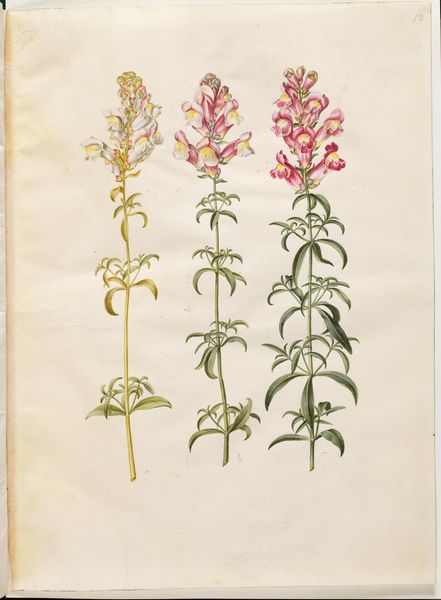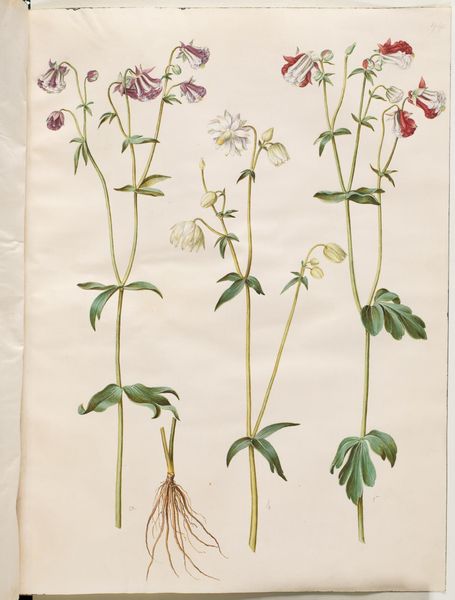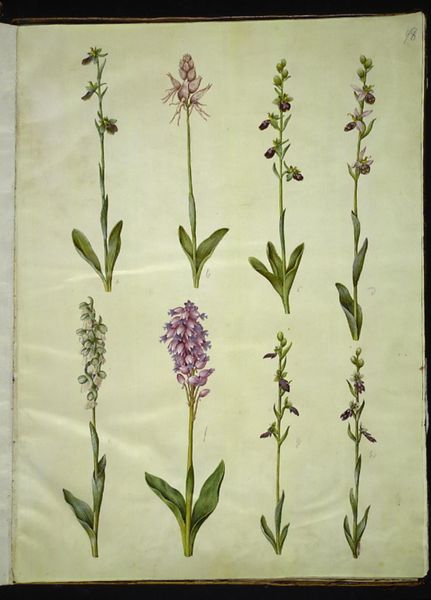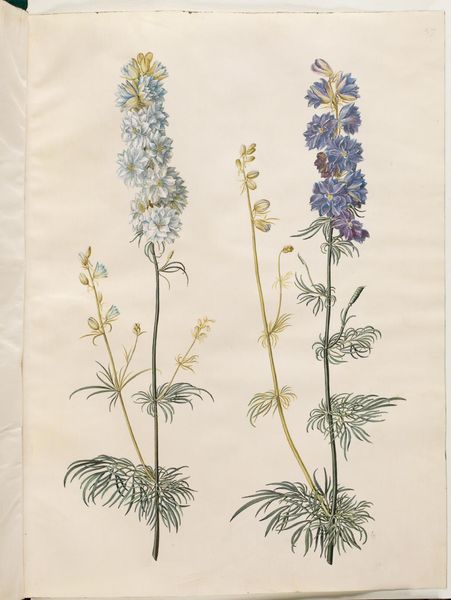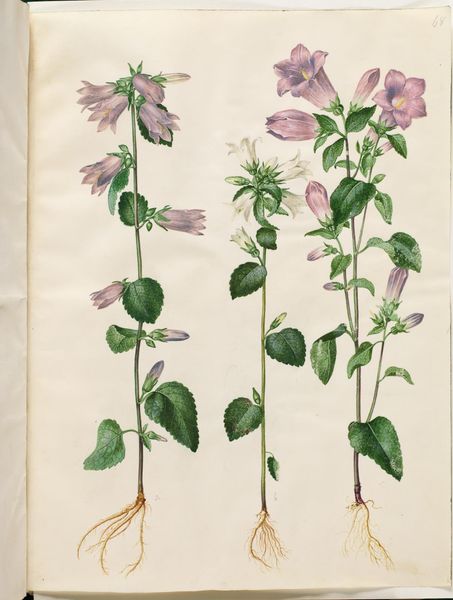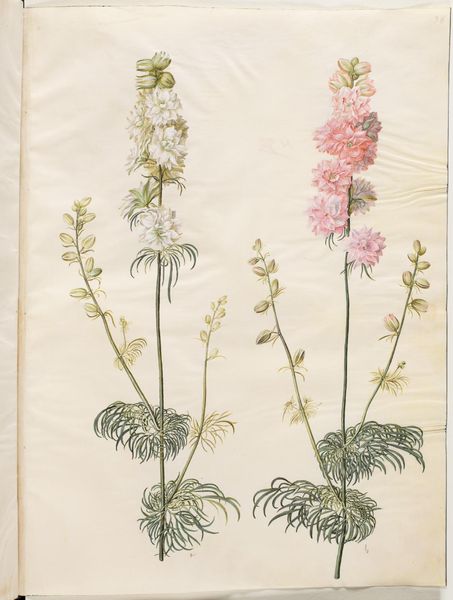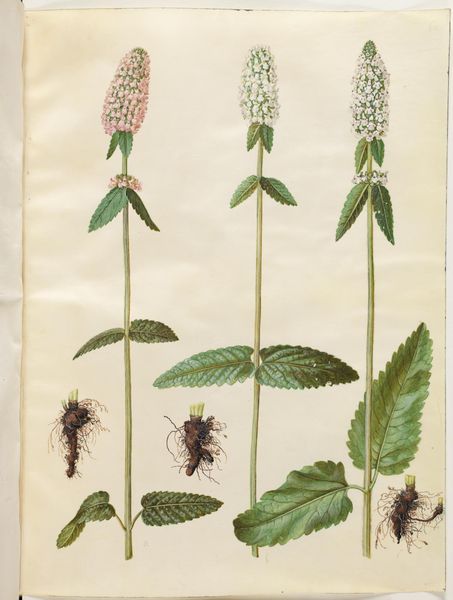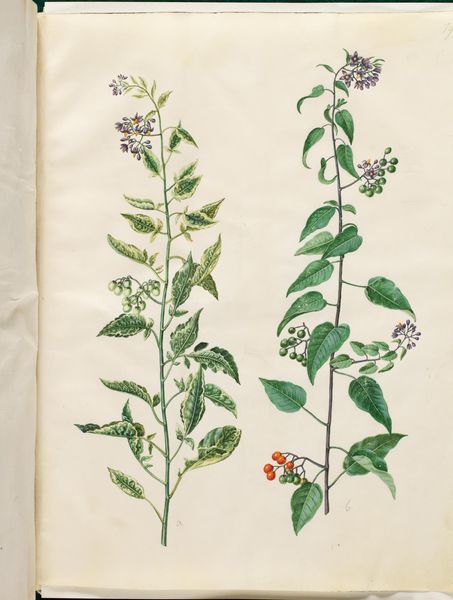
Digitalis purpurea (almindelig fingerbøl) 1649 - 1659
0:00
0:00
drawing, gouache, paper, watercolor
#
drawing
#
water colours
#
dutch-golden-age
#
gouache
#
paper
#
11_renaissance
#
watercolor
#
watercolour illustration
#
botanical art
#
watercolor
Dimensions: 505 mm (height) x 385 mm (width) (bladmaal)
Editor: Here we have "Digitalis purpurea" or common foxglove, a watercolor, gouache and drawing on paper, created between 1649 and 1659 by Hans Simon Holtzbecker. It's interesting to see this botanical rendering with such detail. What catches your eye when you examine this work? Curator: For me, it's less about the plant itself and more about the context of its creation. Who was Holtzbecker making this for? Was it a scientific document, an artistic study, or perhaps something commissioned? The very materials—the paper, the pigments—speak to resources, trade, and access. How would such a meticulous image be used or consumed by its audience? Editor: I see your point! It makes me wonder where he sourced those pigments. Curator: Exactly! Were they locally sourced or imported? Pigment production in this period was labor-intensive, often relying on global trade networks and sometimes exploited labor. Thinking about the 'who' and the 'how' transforms this from a simple botanical illustration into a window onto broader socio-economic dynamics. Editor: I hadn't considered it that way. I was so focused on the pretty flowers! Curator: That's the trap! Art history isn't just about aesthetics. It's about understanding the systems and labor that create and support art. It also touches on class, who had access to art production. The level of detail here speaks to Holtzbecker's skill, but also the time and resources available for this sort of detailed rendering. It challenges us to think about artistic labor and production practices in the 17th century. Editor: So, by examining the materials and the process, we can uncover the hidden social and economic narratives embedded within the artwork? That gives me so much more to think about! Curator: Precisely! Shifting the focus from the finished artwork to the process helps expose these layers. I'll never look at botanical art the same way again!
Comments
No comments
Be the first to comment and join the conversation on the ultimate creative platform.

